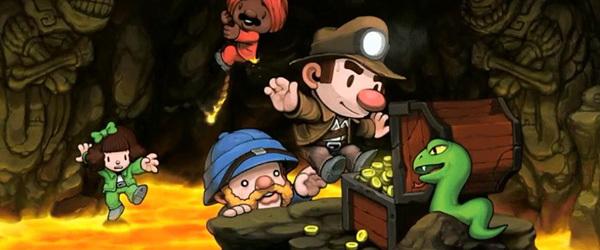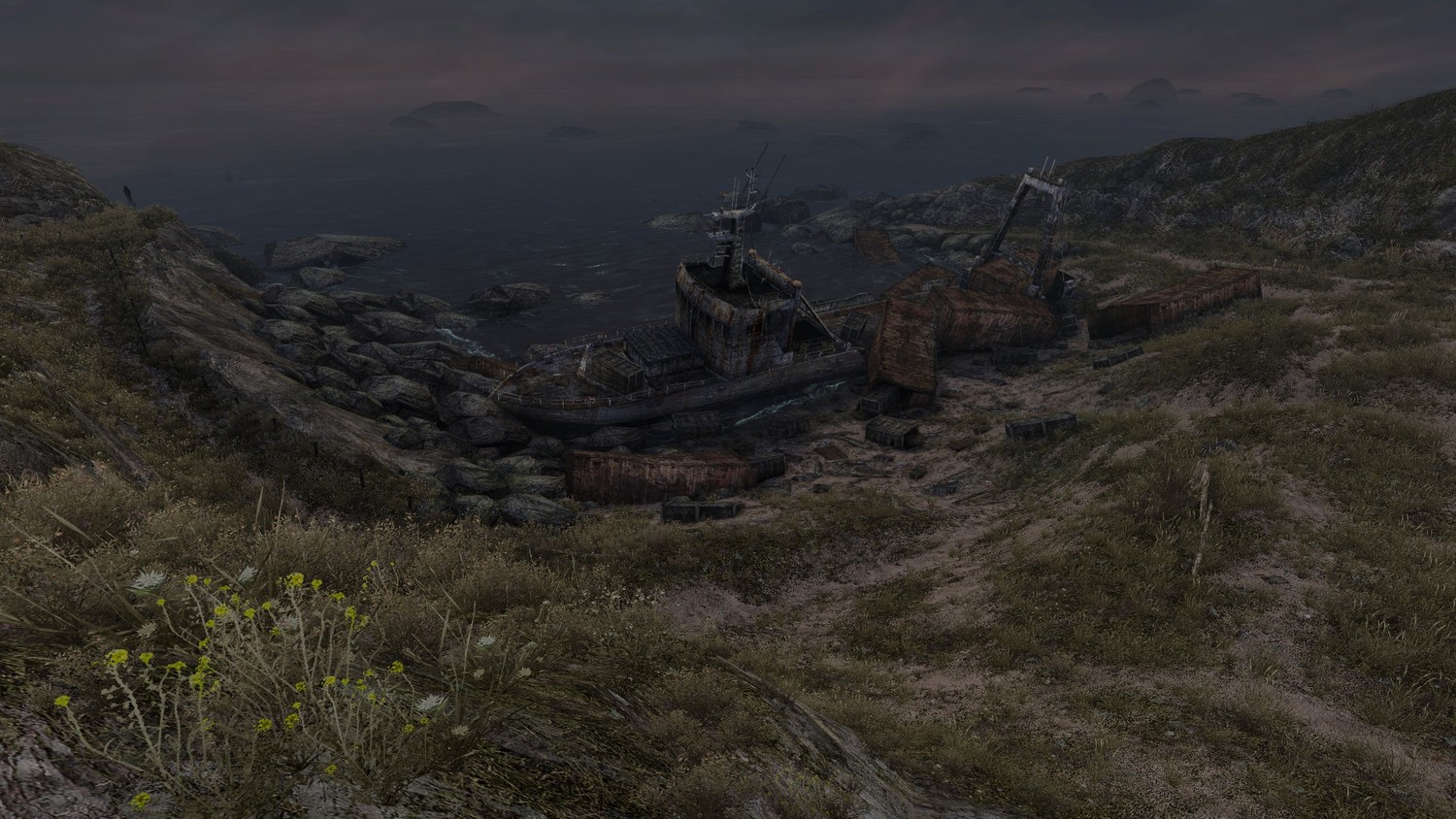
Review: Spelunky (PS3/Vita)
Posted by Eric G on August 29th, 2013 | 8 Comments | Tags: Mossmouth , Spelunky
I’m going to begin this Spelunky review by humble-bragging explaining why I was chosen among our staff to cover it. Frequenters of the site, feel free to skip this introductory paragraph. In 2010, I got my first taste of the cave exploration genre of games when Tozai released Spelunker HD on the PSN. I was initially put off by its difficulty, as I’m sure many people are. However, I was motivated to complete the game, so I learned its rules and traversed its worlds in near-astonishment. Then I traversed its worlds another dozen times, and achieved the number one ranking on the US/EU leaderboards. I met the developers, got some exclusive swag, and to this day I still fire the game up and play. (I’m not ranked #1 at the moment, but I’m always planning a comeback.) I admired the game’s difficulty, the feeling of exploration, the sense of humor, and above all else the skillful level design. So it was only obvious that I would be in charge of the Spelunky review, right? My extensive digital spelunking experience and knowledge will finally come in hand, and on a handheld device, to boot! I have played Spelunky a ton since I first redeemed it, and without further ado, my review.
Before receiving it for review, I didn’t know much about Spelunky. I knew that it existed and had played it once or twice at events, but I never really cared to dive deeply into it. At first, I donned it “Spelunker-lite,” a game for casual explorers who couldn’t handle the harsh penalties in Spelunker HD. After extensive time with the game, I now feel comfortable describing it as “Spelunker-like;” a game that was clearly inspired by Spelunker yet unique in many ways.
Perhaps the biggest schtick in Spelunky is that the levels are randomly generated. There are four main-path worlds – The Mines, The Jungle, Ice Caves, and The Temple – each with four sub-stages. There are a few concurrent objectives to the game. First of all, you want to survive and progress as far down as you can go. Secondly, you’re looking to collect gems, gold, etc. in order to achieve a high score. You start off with four hearts, which act as your four lives. There are countless things that will hurt you throughout the game, so it’s pointless to list them all, but you’ll quickly learn what leads to losing a life and what leads to losing all of your lives. What keeps things fresh is that each world has its own set of enemies and environmental hazards. The Mines, for instance, are littered with arrow traps, snakes, bats, and more, while the Ice Caves are inhabited by yeti, woolly mammoths, and slippery blocks. There are also damsels to be rescued (giving you more hearts), golden statues to be swiped (giving you a lot of money), and shops wherein you can buy items that will help you along the way.
Warning: Playthrough Preview may contain spoilers.
You start the game with four bombs and four ropes. The bombs blow through rocks, and ropes assist you in climbing up or down large expanses. Other items include a cape that will slow your fall, a single-use parachute, climbing gloves, a shotgun, a compass that points to the exit of the level, and more. Some of the items are passive (you always wear the cape) while others need to be picked up and held by crouching and pressing the square button. I had a good time finding items and learning what they do. Each time I’d equip something, I would use trial and error to figure out what it did. If I was stumped, I’d check out the handy-dandy journal by pressing the select button. The journal gives brief descriptions of places, items, and enemies. At the end of each world, there is a Tunnel Man who asks for supplies to build a shortcut. The supplies are usually a few bombs, a few ropes, or some money. After giving him what he needs three separate times, a shortcut will open up in the initial starting area.
In addition to Adventure Mode, Spelunky has a co-op campaign as well as Deathmatch multiplayer modes supporting up to 4 players. The multiplayer is local only, but includes single system same-screen or cross-platform play via ad-hoc or network. When playing together on a single system, the person with the flag controls the camera. Additional players, if off-screen, have about 15 seconds to get back onscreen before they simply die. The cross-platform play works very well, with little to no lag at all. It’s nice to have each player control his own screen, allowing for simultaneous exploration without worrying about where the other person is. The single system multiplayer works all right, but I would have liked at least an option to play the game split screen.
My biggest complaint about Spelunky may also be conceived as its biggest strength: The randomness of the game is a double-edged sword. It’s great that the walls shift and the game changes each time you play it. The levels are small enough that you’re never really that far from the exit, so it’s fun to play each one anew. However, things happen (sometimes off-screen) that you have no control of. Those things can often lead to your death, or at least to your immense frustration. I can’t count the number of times where I felt extremely confident in my run only to be nudged into a tiki-trap, walloped into the abyss, or stun-locked by a roomful of enemies until I died. Items such as rocks, arrows, and keys can be hurled at enemies, but if they bounce off of a wall or two (even if you didn’t initially throw them) then drop on your head, they will hurt you. If you try to steal from the shopkeeper or toss a bomb at him, he’ll come after you with a shotgun and for the rest of your entire game, you will be attacked by shopkeepers as soon as you are in proximity. That makes sense, that’s all good and well. But there were many times where a shopkeeper was triggered somewhere off-screen, marring my entire game, and I had nothing to do with it.
My main point is that Spelunky’s randomness is great. You’re forced to stay on your toes each time you boot up the game. Each world has a few different ‘events’ that can occur randomly, and those spice things up, too. Spelunky’s randomness is also a pain in the ass. If a part of the level looks particularly difficult, that doesn’t mean it will yield something useful. How cautious or skillful you are when playing the game is of almost no matter. The more you play the game, the better you will get and the more you will understand it, but there’s nothing stopping a room full of four giant spiders from spawning during one of the dark stages. The excitement I feel for the mystery of what’s ahead is handily outweighed by the frustration of losing at little to no fault of my own. I see some outrageous high scores on the leaderboards that inspire me to try one more time to start from the beginning and play through to the end. I know the game technically has an infinite amount of replayability. In my opinion, though, replayability includes the desire to keep playing. I have spent over a dozen hours in order to complete Spelunky and thensome. That may be close to how much time I want to spend playing it total.
A copy of this game was provided by the publisher for review purposes. For more info on our review policy click here. This review is for the PlayStation Vita version of the game.
General Info
- Developer: Blit Software, Mossmouth
- Publisher: Mossmouth
- Release Date: August 2013
- Price: $14.99, YOPO, £11.99/€14.99
- Genre: Arcade, Platformer, Spelunking
Score:
What I Like:
- Randomness
- Jazzy tunes
- Running/jumping/climbing
What I Dislike:
- Randomness
- Unfair deaths
- Being chain attacked/stun-locked
































































